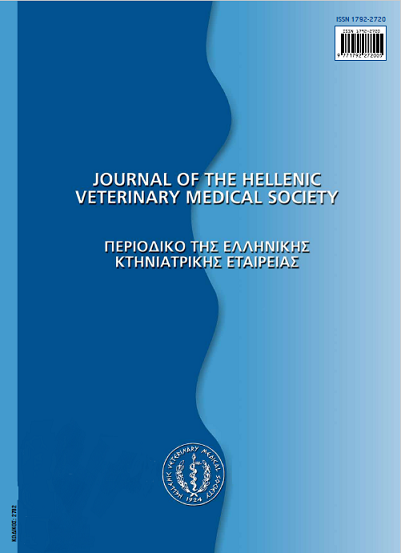Transmission through the water of the bacterial diseases of the euryaline fish cultured in the Mediterranean. Elements of epidemiology and risk factors which concern their spread and transmission of the respective pathogens
Abstract
Intensive fish culture practiced in the Mediterranean requires fish to live under stressful conditions and high fish densities, something that facilitates transmission and spread of bacterial pathogens within cultured fish populations. One of the most important means of transmission of bacterial diseases of the euryaline fish that are cultured in the Mediterranean is the seawater. The main pathogenic bacteria that infect the euryaline fish species that are cultured in the Mediterranean are: Listonella anguillarum, Photobacterìum damselae subsp piscicida Tenacibaculum marìtimum, Piscirikettsia salmonis, Pseudomonas anguilliseptica as well as various species of the genus Vibrìo, various species of the genera Streptococcus and Lactococcus, and species of the genus Mycobacterium. In the natural environment the bacteria, which are usually shed by infected fish, after surviving for some time in the water column and the bottom of the sea can, under appropriate conditions, infect other, cultured or wild susceptible fish. This review presents the published information that concerns the ability of the various bacterial pathogens of the euryaline fish to spread via water. Most of the published information concerning the bacterial diseases of the Mediterranean cultured euryaline fish deal with the characteristics, resistance and means of transmission of the respective bacteria, as determined in experimental studies. This information is very important for the design and application of prevention and control programs for the respective diseases, however, these programs must also consider epidemiological information concerning risk factors that may affect the onset and severity of the diseases. The investigation of risk factors, in analytical epidemiological studies, focuses on characteristics that relate to the pathogen, the host and the environment, which can concern and be measured at the farm level or at any other level of organization of the population. Especially useful in these cases is the determination of management practices which can be related to increased or decreased morbidity or mortality (total or due to specific diseases). In the current study, reference is made to analytical epidemiological studies in which risk factors that may affect the transmission of several fish pathogens, as well as the occurrence and severity of the respective diseases, have been investigated. Although these studies refer to environments outside the Mediterranean, however, they are particularly interesting because they concern infectious agents that are transmitted by water in conditions and culture environments similar to those of the Mediterranean seawater aquaculture. The approach of prevention of bacterial diseases through management of the populations and their environment is particularly important in the intensive culture of euryaline fish, since the methods that are used, today, for the reduction of the concentration of bacterial pathogens in the water have limited application and effectiveness in such systems. At the farm level, and especially in land-based facilities, three methods are used to decrease the concentration of pathogenic bacteria in the incoming sea water: ozonation, UV radiation and manipulation of the microbial flora of the water using non pathogenic microorganisms, which act antagonistically to the pathogenic bacteria. The first two methods are especially effective in flow-through systems, where water is not recirculated but not so much in closed systems where because the water is re-used fish are infected by the few bacteria that survive the treatment. The alteration of the microbial flora of the incoming water, through antagonism, can be applied in hatcheries during the initial stages of fish culture, but not at the grow out stage in the cages.
Article Details
- Zitationsvorschlag
-
VATSOS (Ι. Ν. ΒΑΤΣΟΣ) N. I., & GEORGIADIS (Μ. ΓΕΩΡΓΙΑΔΗΣ) M. (2017). Transmission through the water of the bacterial diseases of the euryaline fish cultured in the Mediterranean. Elements of epidemiology and risk factors which concern their spread and transmission of the respective pathogens. Journal of the Hellenic Veterinary Medical Society, 59(3), 213–224. https://doi.org/10.12681/jhvms.14959
- Ausgabe
- Bd. 59 Nr. 3 (2008)
- Rubrik
- Review Articles
Authors who publish with this journal agree to the following terms:
· Authors retain copyright and grant the journal right of first publication with the work simultaneously licensed under a Creative Commons Attribution Non-Commercial License that allows others to share the work with an acknowledgement of the work's authorship and initial publication in this journal.
· Authors are able to enter into separate, additional contractual arrangements for the non-exclusive distribution of the journal's published version of the work (e.g. post it to an institutional repository or publish it in a book), with an acknowledgement of its initial publication in this journal.
· Authors are permitted and encouraged to post their work online (preferably in institutional repositories or on their website) prior to and during the submission process, as it can lead to productive exchanges, as well as earlier and greater citation of published work.



